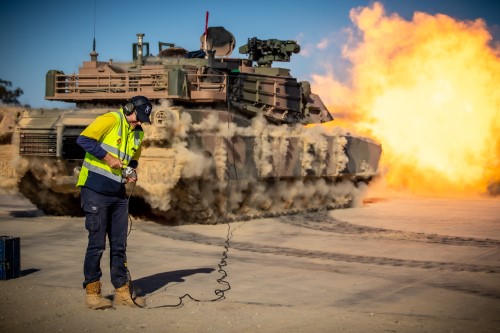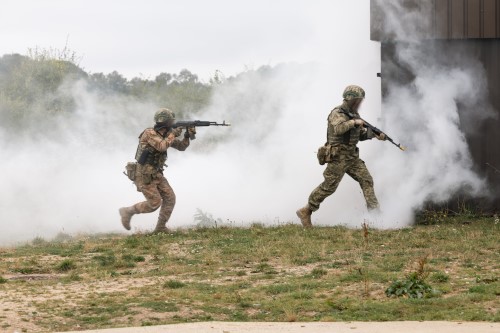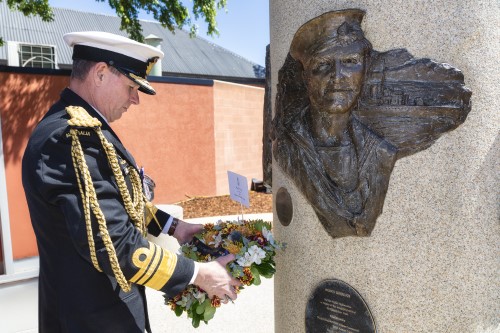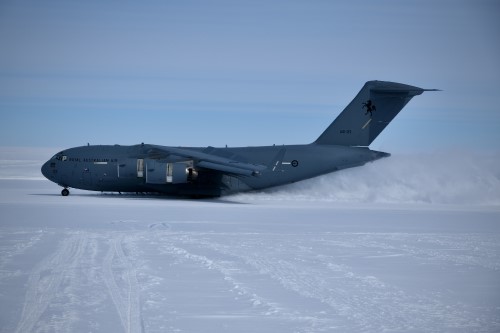Defence News

Upgraded systems a feature of new Abrams tank
All-digital systems, a remote weapon station and the capability to fire airburst rounds feature on the Army’s newly arrived M1A2 Abrams main battle tank.
Warrant Officer Class One Bernie Maus said the tank’s most significant upgrade was a commander’s independent thermal viewer, a sighting system that operates separately from the turret. ‘If my main gun is facing 3 o’clock, I can scan in another direction and quickly bring the main gun on target without needing to direct the gunner,’ WO1 Maus said. ‘That’s a huge upgrade to the system.’
The M1A2 also comes with an ammunition data link that allows for programming new ammunition coming into service for different effects, like point detonate, delay and airburst. Additionally, the electrical system is now fully digital, powered by 2 computers that continuously analyse and process information across the system.
‘From a maintenance perspective, we’ve reduced the effort by about 40 per cent because the system tells the crew exactly which subsystem has an issue, so they don’t need to check everything manually,’ WO1 Maus said. Improved diagnostics allow for immediate repairs, as the crew can access system error codes, address specific issues and get the tank back into operation faster.
Another upgrade is the tank’s remotely controlled weapon station, enabling the crew to operate a mounted weapon from inside the vehicle, keeping them protected from enemy fire. The new fleet will comprise 75 upgraded M1A2 SEPv3 tanks by 2025, with crew conversion training already under way.
Read the whole story on Defence News.

A valuable exchange in Ukraine
Armed Forces of Ukraine (AFU) soldiers extolled the value of training with Australian personnel on the latest courses to assist their fight against Russia’s illegal invasion of their country. Despite having extensive experience on the frontline, they said it was beneficial to exchange ideas, and that the Australian soldiers provided them with a different perspective when planning tactical actions.
‘The Australians have taught us how to plan everything step by step instead of just passing information person to person, and they have taught us how to do the planning process very thoroughly,’ said an AFU soldier on the platoon commander battle course. ‘It has broadened our horizons on how to approach things. Sometimes our method works well and other times we can take some great experience from the Australian Army teachings.’
The 3 key training activities being conducted were trench warfare, live-fire training and urban operations with a focus on tactical care of the combat casualty, explosive ordnance and drone capabilities.
Australian contingent commander Major Ben Carolan said Operation Kudu was a unique experience because of the mutual learning between the training staff and trainees. ‘There’s combat veterans here, and they educated us on what it’s like to fight on the frontline, and to fight for their friends and families,’ he said. ‘For Australia, it is important for us to provide support and assist Ukraine to help fight for their sovereignty.’
Read the whole story on Defence News.

Honouring the courage and sacrifice of Sheean VC
The Australian Navy Cadets Training Ship Mersey has been renamed Training Ship Sheean to honour the sacrifice of the late Ordinary Seaman Edward ‘Teddy’ Sheean VC in the Second World War.
Chief of Navy Vice Admiral Mark Hammond announced the renaming after a Remembrance Day ceremony in Latrobe, Tasmania, while unveiling a new statue of Sheean VC funded by the Tasmanian Government and Latrobe Council.
While serving on board HMAS Armidale in December 1942, the ship came under aerial attack from Japanese aircraft. Ordinary Seaman Sheean helped free a life raft, allowing his shipmates to escape the sinking ship, before he returned to the ship’s Oerlikon gun and fired at the enemy, hitting at least 2 of their aircraft. Despite being wounded in the chest and back, the 18 year old strapped himself to the gun and continued firing until the ship sank, taking him to his death.
Read the whole story on Defence News.

Resupply missions underway for icy continent
Defence has delivered much needed supplies to help scientists in Antarctica discover the secrets behind prehistoric climate change. Under Operation Southern Discovery, Air Force provides regular airlifts for the Australian Antarctic Program supporting scientific research such as the Million Year Ice Core project.
Air Force flew 2 trips from Melbourne to Antarctica in November, carrying more than 20 pallets of food, building materials and general cargo. Crews fly during the Antarctic summer months, but even in the comparatively warm period, the weather was still an element to be reckoned with.
Loadmasters had a window of less than 2 hours to unload their cargo and take off before the weather turned. If meteorologists warned about hazardous weather, the crew would be forced to leave as quickly as possible. If there was ice on the wings, the aircraft wouldn’t fly properly.
It was the first time RAAF C-17A Globemaster III pilot Flight Lieutenant Andrew Muhl had landed his 128 tonne – plus cargo – aircraft on an icy runway atop a 150m-thick glacier. ‘The Wilkins Aerodrome staff till the top of the glacier so the runway’s grooved and there’s a bit of friction,’ he said. ‘When we landed and turned around, you could see where the tyres had been. There was pretty much ice under the tyre tracks.’
Read the whole story on Defence News.